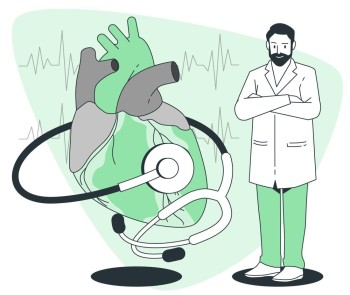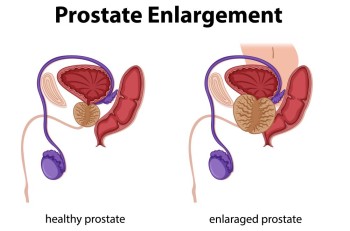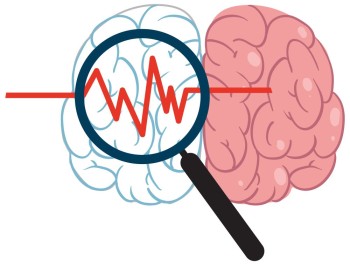
Magnetic Resonance Imaging (MRI) has revolutionized medical diagnostics, providing detailed insights into the intricate structures of the human body.
MRI Lumbar Spine or LS Spine with Cost
MRI of the Lumbar Spine: A Detailed Insight
Magnetic Resonance Imaging (MRI) has revolutionized medical diagnostics, providing detailed insights into the intricate structures of the human body. When it comes to investigating the lumbar spine, MRI emerges as a crucial tool for comprehensive evaluation.
Understanding the Lumbar Spine
Anatomy of the Lumbar Spine
The lumbar spine, consisting of five vertebrae (L1 to L5), plays a pivotal role in supporting the upper body and facilitating movement. Each vertebra is separated by intervertebral discs, acting as shock absorbers.
Common Issues Affecting the Lumbar Spine
The lower back is susceptible to various conditions, including herniated discs, spinal stenosis, and degenerative disc disease. Understanding these issues is essential for appreciating the importance of lumbar spine MRI.
Purpose of MRI for the Lumbar Spine
Identifying and Diagnosing Spine-Related Problems
Lumbar spine MRI excels in identifying issues like disc herniation, nerve compression, and structural abnormalities. The detailed imaging allows healthcare professionals to precisely diagnose and plan appropriate treatments.
Non-invasive Nature of MRI
Unlike invasive procedures, lumbar spine MRI is non-invasive, ensuring patient comfort while delivering high-quality images. This eliminates the need for surgical interventions in many cases.
Preparation for MRI
Patient Instructions Before the Procedure
Patients preparing for lumbar spine MRI may receive specific instructions, such as fasting or avoiding certain medications. Following these guidelines ensures optimal imaging results.
Types of Lumbar Spine MRI
Different types of lumbar spine MRI, including contrast-enhanced imaging, cater to specific diagnostic needs. Tailoring the imaging approach enhances the accuracy of results.
The MRI Process
Steps Involved in the Imaging Procedure
During lumbar spine MRI, patients lie on a comfortable table, entering a tunnel-like scanner. The machine uses a strong magnetic field and radio waves to create detailed cross-sectional images of the lumbar spine.
Duration and Comfort During the Scan
The procedure typically lasts 30 to 60 minutes. While patients need to remain still, modern scanners prioritize comfort, contributing to a more relaxed experience.
Interpretation of Results
How Radiologists Analyze Lumbar Spine MRI Images
Skilled radiologists interpret the images, looking for abnormalities like disc bulges, inflammation, or nerve compression. Clear communication of findings is crucial for effective diagnosis.
Common Findings and Potential Issues
Understanding common MRI findings, such as disc degeneration or spinal abnormalities, empowers patients and healthcare providers to make informed decisions regarding treatment.
Benefits of MRI for the Lumbar Spine
Accuracy in Diagnosis
The precision of lumbar spine MRI enhances accuracy in diagnosing conditions, allowing for targeted and effective treatment plans.
Early Detection of Abnormalities
Early detection through MRI enables timely intervention, preventing the progression of lumbar spine issues and improving overall outcomes.
Limitations and Considerations
Instances Where MRI May Not Be Suitable
While lumbar spine MRI is highly effective, situations involving metallic implants may necessitate alternative imaging methods. Understanding these limitations is crucial for appropriate diagnostic choices.
Safety Concerns and Contraindications
Addressing safety concerns related to the use of magnetic fields ensures that lumbar spine MRI remains a safe and beneficial diagnostic tool for most individuals.
Comparison with Other Imaging Techniques
Contrasting MRI with X-rays and CT Scans
Compared to X-rays and CT scans, lumbar spine MRI offers superior detail without exposing patients to harmful radiation. This makes it a preferred choice for comprehensive evaluation.
Advantages of Choosing MRI for Lumbar Spine Evaluation
The ability of MRI to visualize soft tissues, including discs and nerves, distinguishes it as the preferred method for assessing lumbar spine issues with precision.
Post-MRI Care and Follow-up
What to Expect After the Procedure
Patients should be informed about post-MRI care, including any necessary restrictions or activities to facilitate recovery.
Communicating Results to Patients
Effective communication of MRI results is crucial for patient understanding and collaboration in developing a treatment plan.
Common Misconceptions About Lumbar Spine MRI
Addressing Myths and Fears
Dispelling common misconceptions, such as concerns about radiation or claustrophobia, helps alleviate fears associated with lumbar spine MRI, promoting informed decision-making.
Clarifying the Safety of MRI
Educating patients about the safety of MRI reinforces their confidence in choosing this imaging modality, emphasizing its non-invasive nature and absence of radiation exposure.
Real-Life Patient Stories
Narratives of Individuals Benefiting from Lumbar Spine MRI
Sharing real-life stories highlights the positive impact of lumbar spine MRI on treatment decisions and overall well-being, providing a human touch to the technological aspects.
Impact on Treatment Decisions
The valuable insights gained from lumbar spine MRI often play a crucial role in determining appropriate treatment strategies, ultimately improving patient outcomes.
Future Trends in Lumbar Spine Imaging
Advancements in MRI Technology
Ongoing advancements in MRI technology promise even more detailed and efficient lumbar spine imaging, enhancing diagnostic capabilities.
Emerging Techniques for Enhanced Diagnosis
New techniques, such as functional MRI, are emerging, offering additional layers of information for a more comprehensive understanding of lumbar spine health.
Importance of Regular Check-ups
Encouraging Preventive Healthcare
Regular check-ups for the lumbar spine are essential for early detection and intervention, emphasizing the importance of preventive healthcare measures.
Routine Monitoring for Spine Health
Incorporating routine lumbar spine monitoring into healthcare practices helps identify potential issues before they escalate, promoting long-term spine health.
Conclusion
In conclusion, lumbar spine MRI stands as a cornerstone in the field of diagnostic imaging, providing unparalleled insights into the complexities of the lower back. Its non-invasive nature, accuracy in diagnosis, and potential for early detection make it a valuable tool for both patients and healthcare providers. As technology continues to advance, the future holds exciting possibilities for even more refined lumbar spine imaging techniques, further improving patient care.
FAQs (Frequently Asked Questions) about Lumbar Spine MRI
What is Lumbar Spine MRI, and why is it performed?
Lumbar
Spine MRI is a non-invasive imaging technique used to visualize the structures
of the lower back, aiding in the diagnosis of various spinal issues such as
herniated discs and nerve compression.
How long does a Lumbar Spine MRI procedure take?
Typically,
a Lumbar Spine MRI lasts between 30 to 60 minutes, ensuring a thorough
examination while prioritizing patient comfort.
Are there any preparations required before undergoing Lumbar Spine MRI?
Yes, patients may receive specific instructions such as fasting or avoiding certain medications before the procedure to ensure accurate imaging results.
Is Lumbar Spine MRI safe, considering the use of magnetic fields?
Lumbar
Spine MRI is generally considered safe, with no exposure to harmful radiation.
However, individuals with certain metallic implants may need alternative
imaging methods.
How are the results of Lumbar Spine MRI interpreted?
Skilled
radiologists analyze the images, looking for abnormalities like disc bulges or
inflammation. Clear communication of findings is crucial for effective diagnosis.
What are the advantages of choosing MRI over other imaging techniques for the lumbar spine?
MRI offers superior detail without exposing patients to radiation, making it the preferred choice for assessing soft tissues like discs and nerves in the lumbar spine.
How soon can patients expect to receive Lumbar Spine MRI results?
The turnaround time for Lumbar Spine MRI results varies, but healthcare providers strive to communicate findings promptly to facilitate timely treatment decisions.
Are there any common misconceptions about Lumbar Spine MRI?
Yes,
addressing myths such as concerns about radiation or claustrophobia helps
dispel fears and promotes informed decision-making about this diagnostic tool.
Can Lumbar Spine MRI detect all spinal abnormalities?
While
highly effective, there may be instances where alternative imaging methods are
recommended, especially for patients with certain metallic implants.
How often should individuals undergo regular check-ups for their lumbar spine health?
Regular
check-ups for lumbar spine health are encouraged, allowing for early detection
and intervention to promote overall well-being.
Feel free to reach out if you have more questions or concerns about Lumbar Spine MRI. Your spine health is our priority!
(0)
Login to continue



